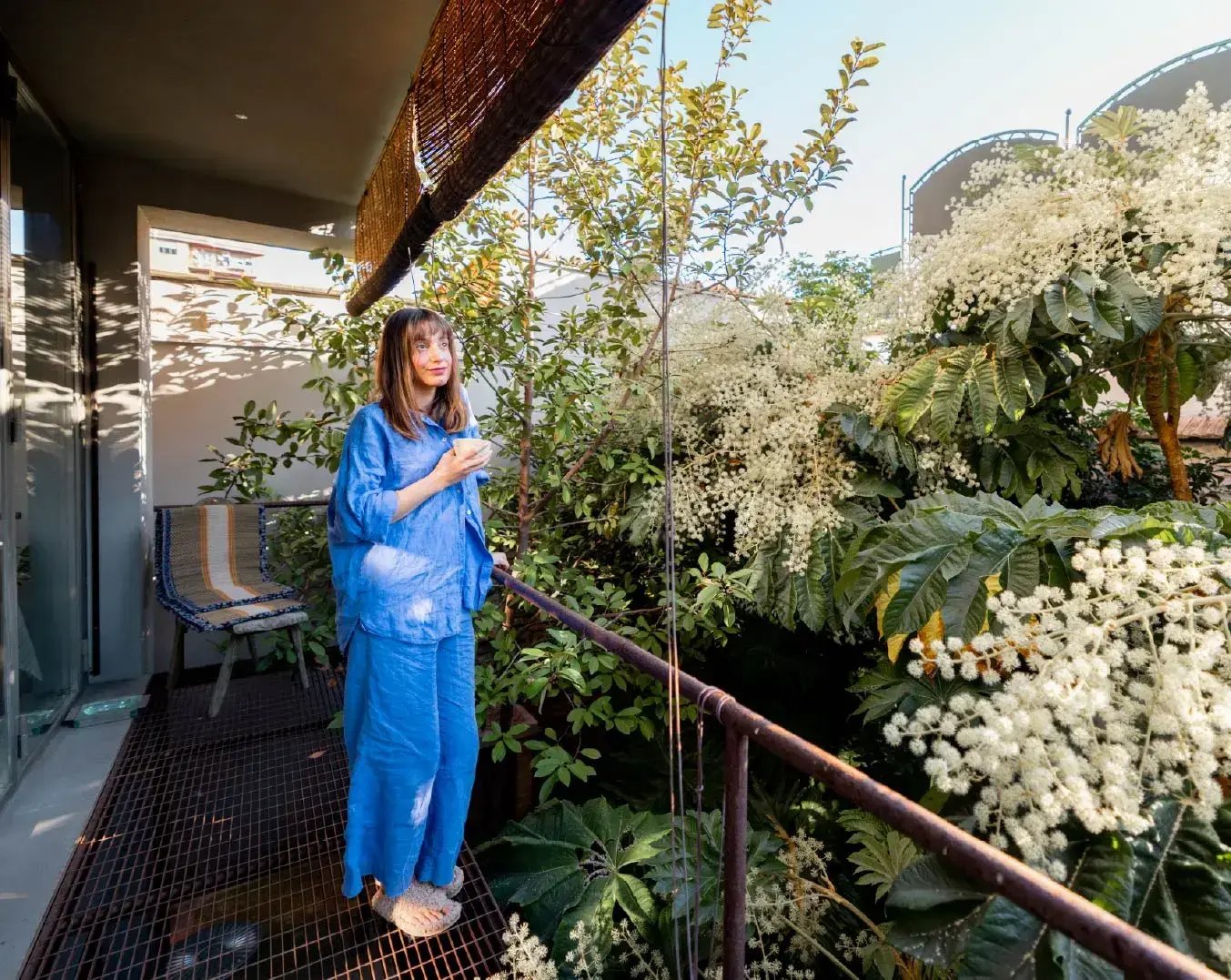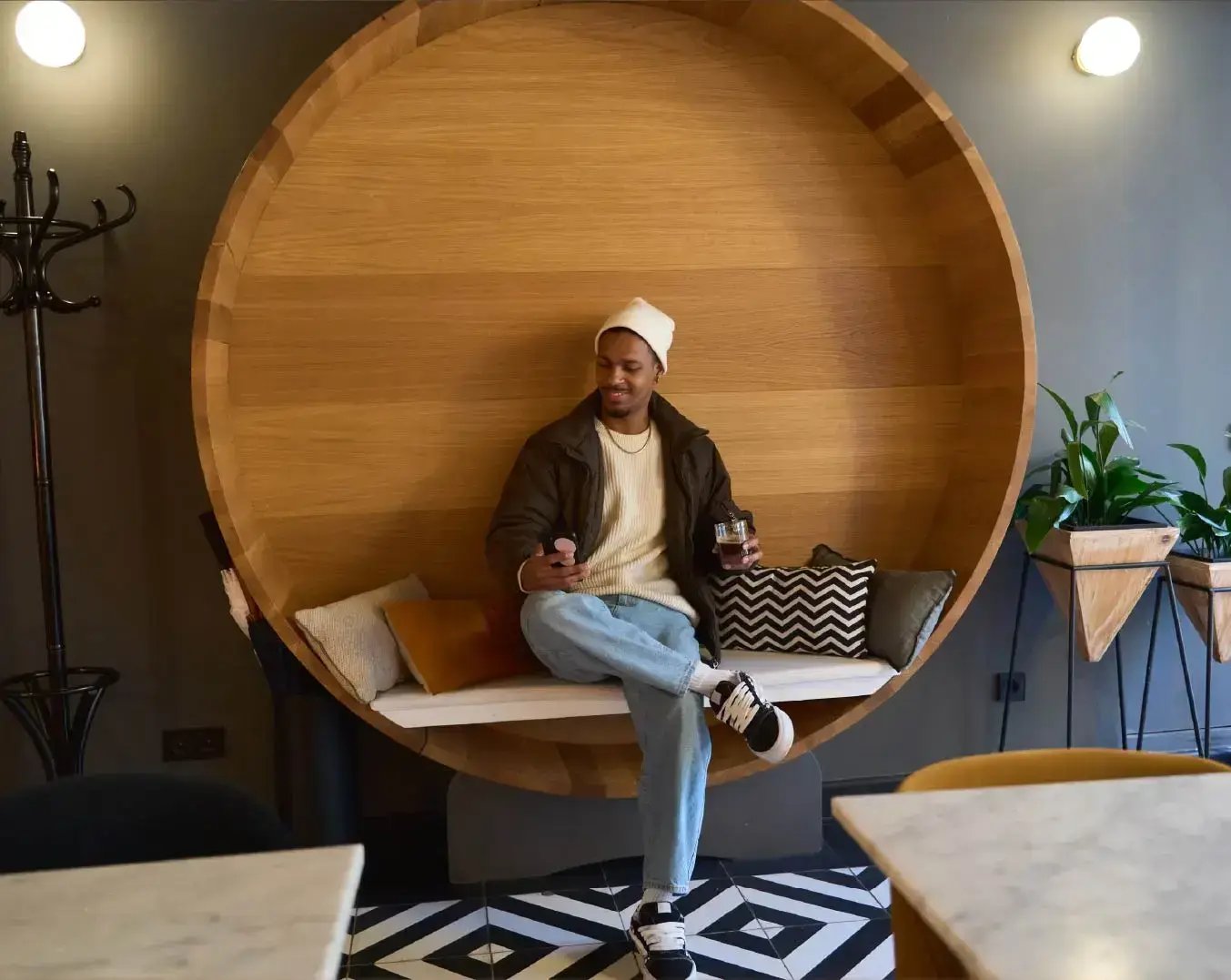What is a micro hotel?
A micro hotel is a type of accommodation that offers a more minimal offering at a reduced price. It’s a way for hoteliers to cut down on expenses, especially if they want to be situated in a top location like Times Square in the middle of New York City or in Tokyo, Japan where cost per square foot is quite high.
In fact, the concept of a micro hotel originated in Japan with pod hotels in the 1970s – offering business travelers an affordable, compact and efficient sleeping space.
A micro hotel room can also be used for a short stay rather than an extended stay. A guest might check in for a few hours and have a quick rest before catching the next train, or they might opt for an overnight stay. In the case of Japan, when traveling between cities or working longer hours, many business people will use a pod hotel to freshen up or rest.

What are the pros and cons of a micro hotel?
Pros
- Affordable: micro hotels are much more budget-friendly than a regular hotel chain
- Efficient: smart design maximizes the functionality of every room
- Free amenities: most micro hotels will have high-speed Wi-Fi, toiletries, an on-site business center, cancellation policies, self-check-in and even a fitness center
- Convenient: they’re ideal for short-stays and business trips
- Novel: they offer a modern, one-of-a-kind experience made to be shared on social media
Cons
- Limited space: micro hotels are not comfortable for extended stays or travelers in need of a lot of room
- Minimal privacy: some micro hotels have shared bathrooms and thin walls
- Not family-friendly: this type of hotel is designed for solo travelers or business people
5 common characteristics of micro hotels
1. Design
Sleek design and minimalism create a simple in-room hotel experience that maximizes space. While typical hotel rooms are approximately 300 square feet, micro hotel rooms are usually around 150 square feet, meaning that each square foot needs to be utilized carefully. Each element serves a purpose and the rooms are functional rather than just designed for the sake of aesthetics.
2. Practical
Instead of having to stop by the front desk, guests are able to check in on their own at a micro hotel at any time of the day or night. They’re able to take guest experience into their own hands, making it comfortable, personal and designed to suit their needs, instead of the other way around.
3. Location, location, location
Micro hotels tend to be located near a transportation hub, the city center or near an airport. Guests looking to get some “shut eye” for a few hours can pop in and rent by the hour, and those that have an early start can take advantage of their convenient location.
4. Technology
The best micro hotels invest in good technology. With tools like mobile check-in, self-check-in kiosks, digital keys and virtual assistants, micro hotels can attract tech-forward Gen Z and Millennials and stand out in a big city like NYC or Amsterdam where there is a lot of competition.
5. Amenities
Instead of having a restaurant or bar that requires a large staff, micro hotels will offer guests more convenient meal options like delivery or a snack bar. While in-room amenities might be minimal, communal spaces, bars and lounges may offer guests the connection and space for hanging out that they won’t find in their room.
Is a micro hotel a good option for you?
As a hotelier, a micro hotel could be a good option for you if you’re interested in fast turnover, a reduced workforce and are willing to invest in technology and smart room design. If you offer by-the-hour bookings, you can maximize revenue per room by turning over the room more than once in a day. By charging higher hourly rates you can potentially even make more than you would for an overnight stay.
You can also target a wider variety of potential customers such as business travelers, solo travelers and leisure travelers looking for a quick stay before heading off to to their next destination. By making your hotel attractive and design-forward you can stand out against the competition and offer flexible booking options that attract a much larger audience.

4 most popular micro hotels
1. Moxy Times Square by Marriott
The Moxy hotel is affordable, stylish and provides outdoor space that helps create a social atmosphere that appeals to a younger demographic. Located in the heart of Manhattan, you can get value and affordability while experiencing a vibrant social scene that young guests are likely to share on social media.
2. Microtel Inn & Suites by Wyndham
Smart design, modern rooms and exceptional service make these hotels popular. They include free Wi-Fi and breakfast, as well as fitness centers and pools. While rooms are small, amenities are enough to make guests feel welcome and like they have everything they need.
3. citizenM
citizenM offers up high-end design, smart technology and affordability. With self-check-in kiosks and compact rooms with designer amenities, you really can’t go wrong. By taking concierge and room service off the table, and keeping the overall layout the same, they’re able to offer up all rooms at the same price.
4. Yotel
Yotel has locations in top cities like UK, New York, Paris, London, Amsterdam and more. Inspired by capsule hotels in Japan, they save space by offering compact pods. There are smart in-room features and private bathrooms, making them a popular choice.
Conclusion
As a hotelier, running a micro hotel might be more cost effective than a regular hotel. Though smaller rooms and fewer amenities might not appeal to everyone, they do meet the needs of short-term travelers on the lookout for a budget-friendly, convenient stay. And with smart design and reduced operations, you can keep expenses low and maximize revenue.
Want to learn how to better utilize your hotel space (micro or otherwise) to increase your revenue?
Download our guide “Maximizing Your Property’s Full Potential”




